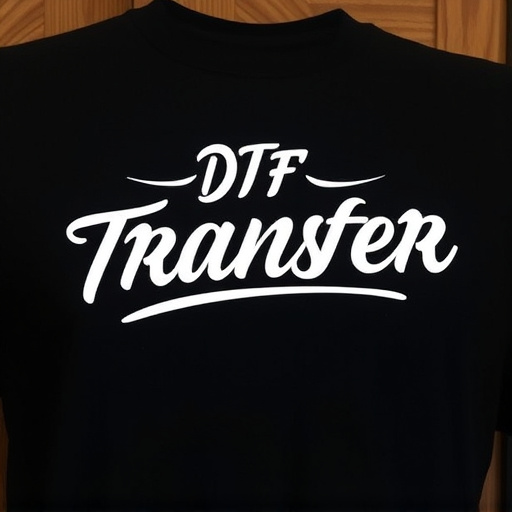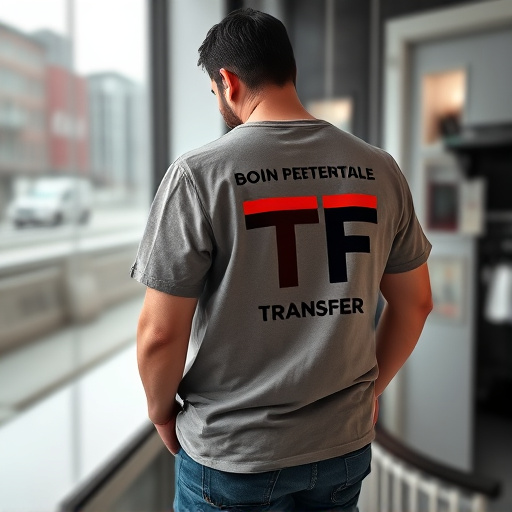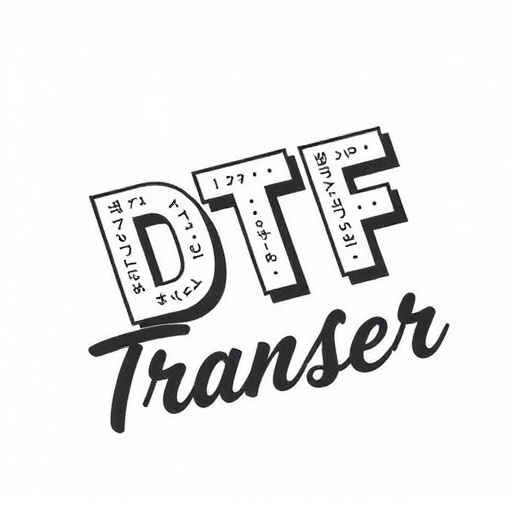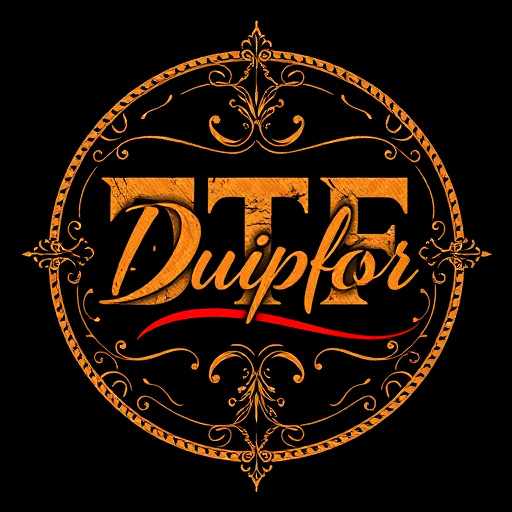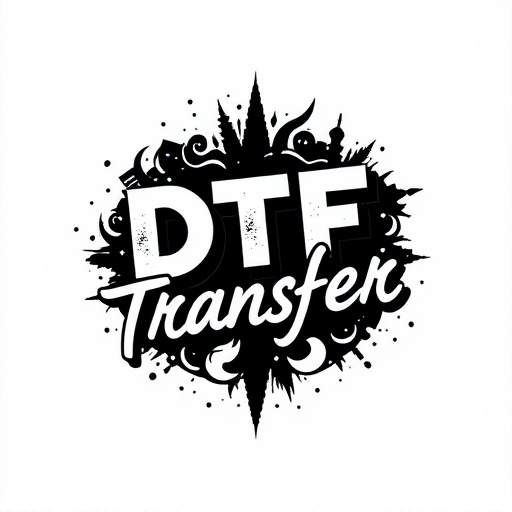Direct-to-Film (DTF) transfer is an innovative printing method that directly applies designs onto various surfaces like textiles, plastics, and metals, eliminating traditional intermediate steps. Special printers deposit thin ink layers cured by UV light or heat, resulting in durable, vibrant prints. DTF's versatility spans fashion, automotive, and signage industries. Successful DTF applications require understanding fabric properties such as porosity, texture, absorbency, and flexibility. Suitable materials include cotton, polyester, vinyl, and certain plastics for easy ink adherence and long-lasting designs. Specialized fabrics engineered to withstand heat and pressure ensure superior print quality, color vibrancy, and durability, making DTF a game-changer in printing and design processes across diverse sectors.
In the realm of print technology, Direct-to-Film (DTF) transfer has emerged as a game-changer for creating vibrant, high-quality designs on various surfaces. This innovative process eliminates traditional printing methods, offering direct application of film to specific materials. This article delves into the intricacies of DTF Transfer, guiding readers through essential aspects such as fabric and surface selection. From understanding the fundamentals to exploring real-world applications, we unravel the secrets behind optimal DTF material choices.
- Understanding Direct-to-Film (DTF) Transfer: A Brief Overview
- Key Factors in Choosing Optimal Fabrics for DTF Printing
- Exploring Common Surfaces Suitable for DTF Application
- Advantages of Using Specialized DTF-Ready Fabrics
- Challenges and Solutions in Direct-to-Film Material Selection
- Case Studies: Successful Implementations of DTF Transfer Techniques
Understanding Direct-to-Film (DTF) Transfer: A Brief Overview

Direct-to-Film (DTF) transfer is a cutting-edge printing technique that allows for the application of designs and graphics directly onto various surfaces, from textiles to plastics and metals. Unlike traditional methods that involve multiple steps and intermediate materials, DTF enables a direct bond between the design and the substrate, resulting in vibrant, durable prints. This technology has revolutionized custom product development, enabling businesses and designers to create personalized items with intricate details and fast turnaround times.
The process involves using specialized printers that deposit thin layers of ink directly onto the target surface. These inks are then cured through UV light or heat, forming a strong bond with the material. The key advantage of DTF is its versatility; it can be applied to a wide range of fabrics and materials, making it suitable for various industries, from fashion and apparel to signage and automotive. Understanding the unique properties of different fabrics and surfaces is crucial to achieving optimal results in DTF transfer applications.
Key Factors in Choosing Optimal Fabrics for DTF Printing

When selecting fabrics for direct-to-film (DTF) printing, several key factors come into play to ensure optimal results. The primary consideration is the fabric’s suitability for receiving and retaining the DTF transfer. This involves understanding the material’s porosity, texture, and general absorbency. Fabrics with a slightly rough surface offer better adhesion for the printed film, ensuring the design is crisp and long-lasting. For instance, natural fabrics like cotton or linen can be excellent choices due to their breathable nature and ability to accept ink effectively.
Additionally, the flexibility and stretch of the fabric are crucial, especially when printing designs with intricate details or curves. Stretchy fabrics allow for better movement and conformability, preventing the film from cracking or peeling over time. The choice should also consider the final use case; whether it’s clothing, accessories, or home decor, each application may require specific fabric properties to meet the desired durability and aesthetic standards.
Exploring Common Surfaces Suitable for DTF Application

Direct-to-film (DTF) transfer has become a popular method for applying graphics and designs to various surfaces. When considering optimal fabrics and surfaces, understanding common choices is essential. From t-shirts and hats to signs and decals, the versatility of DTF technology spans numerous applications.
Suitable surfaces for DTF transfer typically include smooth, flat, and clean materials like cotton, polyester, vinyl, and even some types of plastic. These materials allow for easy adherence of ink, ensuring crisp and long-lasting designs. Common textiles like cotton t-shirts and polyesters are popular choices due to their widespread availability and compatibility with standard printing methods. Vinyl, known for its durability, is often used for outdoor applications or high-traffic areas, while certain plastics offer a smooth surface ideal for precise print details.
Advantages of Using Specialized DTF-Ready Fabrics

Using specialized fabrics designed for Direct-to-Film (DTF) application offers numerous advantages over traditional printing methods. These fabrics are specifically engineered to provide an optimal surface for DTF transfer, ensuring superior print quality and durability. One of the key benefits is their ability to handle the heat and pressure involved in the DTF process without degrading or warping, which can be a common issue with standard materials.
Specialized DTF-ready fabrics also provide a smooth, even surface that promotes precise color reproduction and sharp detail retention. This is particularly important for complex designs and fine line artwork, as it maintains the integrity of the original image. Additionally, these fabrics are often designed to be breathable, allowing ink to dry evenly and preventing unwanted fading or smudging, resulting in vibrant, long-lasting prints.
Challenges and Solutions in Direct-to-Film Material Selection

Direct-to-film (DTF) applications present unique challenges in material selection due to the specific requirements for adhesion, durability, and color vibrancy. The primary hurdle is ensuring that fabrics or surfaces are compatible with the printing process, as not all materials readily accept ink or coatings. For instance, rough textures might hinder ink adhesion, while porous surfaces can absorb moisture, causing ink smudging or fading over time.
Solving these challenges involves careful consideration of fabric or surface properties. Techniques like pre-treatment, priming, and specialized coatings can enhance adhesion and protect the final print. For example, applying a primer specifically designed for DTF transfers can create a smooth, temporary surface that allows ink to bond effectively. Additionally, choosing materials with appropriate moisture resistance and colorfastness ensures the longevity of the printed image, making it suitable for outdoor or high-traffic applications.
Case Studies: Successful Implementations of DTF Transfer Techniques

Direct-to-film (DTF) transfer techniques have found success in various industries, showcasing their versatility and effectiveness. Case studies highlight innovative implementations where DTF has revolutionized printing and design processes. For instance, in the apparel sector, brands have utilized DTF to create unique, personalized garments with intricate designs. By applying this method directly onto fabric, companies achieve high-quality prints with vibrant colors and detailed patterns, ensuring a competitive edge in the market.
Another notable example is the transformation of signage and advertising. Outdoor advertisements and building facades have benefited from DTF technology, enabling businesses to produce visually stunning, long-lasting graphics. These implementations prove that DTF transfer can enhance visual impact, capture attention, and effectively communicate brand messages, making it a valuable tool for marketers and designers alike.

